
Designed by Bryan Spellman, Constructed by Susan Gilmore
Definitely not "culottes."
I have no idea why my mind works the way it does, but I usually wake up with a song playing in my head--my own personal version of YouTube as it were. This morning, that song was Edith Piaf's best-selling single, L'Homme à la moto. If you're old enough, you may know this song as "Black Denim Trousers." It was originally written by Jerry Lieber and Mike Stoller. Don't say you've never heard of them. If you grew up in the 50s, they wrote most of the songs you danced to. In 1955, they wrote a little ditty called "Black Denim Trousers" which became a top-ten hit for a group called the Cheers. Now personally, I don't recall ever hearing of the Cheers, and I certainly didn't know before this morning, that the lead singer of that group was a young man named Bert Convy. Yes, that Bert Convy. Here's one YouTube version of the Cheers singing "Black Leather Trousers":
Pretty much a wussy song, in my opinion. "That doggone motorcycle," indeed. But then, I heard and learned Edith Piaf's version first, and all I can say to Bert Convy is "Honey, you ain't no Edith Piaf."
Here's Piaf's version:
Now wasn't that better? Even if you don't speak French, the energy, the drive, the spirit is so much stronger, darker, more sinister, at least in my opinion. Even the language is stronger, for the most part. Instead of singing "that dog-gone motorcycle," the French translation says "Sa chienne de moto" (his bitch of a bike). Of course, "bitch of a bike" doesn't scan--it doesn't have enough syllables to fit the music.
There is one place where the French translator fell down on the job, though. The first line of the refrain says "Il portait des culottes, des bottes de moto" (He wore culottes, motorcycle boots). Now what kind of a biker would wear culottes? I guess one who wasn't afraid of his feminine side. In doing my research for this little piece, I found a French website where women were talking about how they really didn't find men in culottes at all attractive. Black leather jackets with eagles on the back, that's one thing, but culottes? Never. This led me to Wikipedia where I hoped to find that at least in the 50s, "culottes" referred to something more manly that what the word conjures up in English. Alas, no. Wikipedia does state that the term referred originally to an item of men's apparel, indeed one we've all seen pictured. Usually on a man wearing a powdered wig. Prior to the French Revolution, all the well-dressed aristocrats wore knee-length pants called "culottes." Somehow, I don't think this is what the song intended.
One more thing my research turned up. I have always heard the song (in French) say that the biker had a tattoo "sur la problème" (on the problem), but what it really says is "sur la peau blême" (on his pale skin). Now personally, I prefer my version, but pale skin does make more sense.
And if you haven't heard enough of this song, yet, here's a version by Piaf's wonderful successor, Mireille Mathieu:
I do love Mireille Mathieu. And if you're interested in the lyrics, both French and English, rather than copy them here, I'll just put in links.
L'Homme à la moto.
Black Denim Trousers

















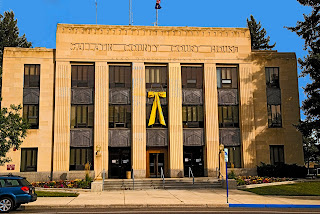






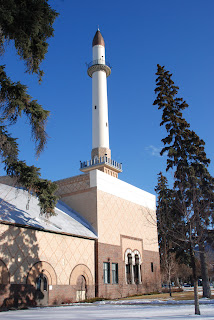



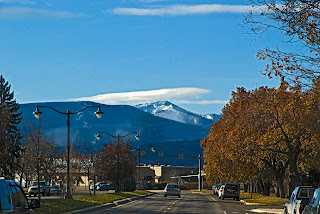

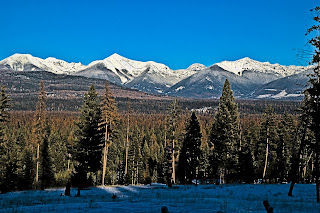

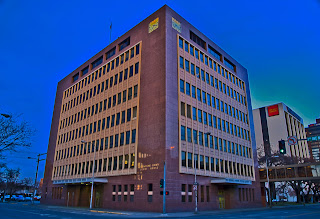
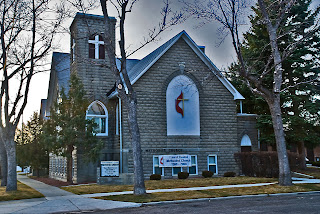

 Yucca with dried pods
Yucca with dried pods

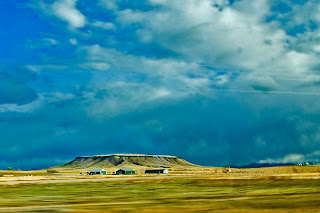

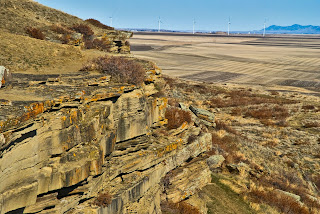 View to the East from the Ulm Pishkun (Buffalo Jump)
View to the East from the Ulm Pishkun (Buffalo Jump)










